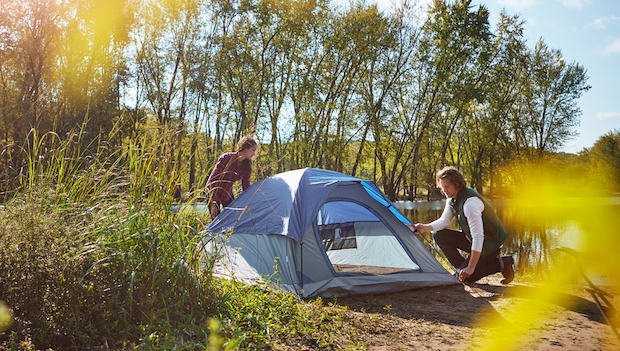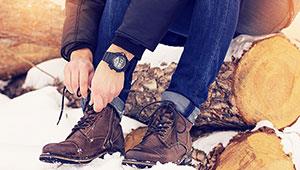
As you pull open the storage closet in the garage and start hauling out your gear, you smile at the memories of your last camping adventure. You remember the great fishing, the beautiful scenery and even the gentle rain that lulled you to sleep the night before you packed up to come home.
But what's that smell coming from the closet? It's kind of musty, and definitely funky. Finally, you reach the sack containing your tent and you see it: the unmistakable powder gray-green blooms of mold and dark stains of mildew. You remembered that gentle rain, sure, but you forgot to unpack the tent when you got home in order for it to dry out. Uh-oh.
Camping is a lot more fun than cleaning. Yet, the cleaning part is what makes the camping part enjoyable. Proper cleaning ensures that when you get to your campsite and start setting up your tent, everything is shiny and clean and in good working order.
Here are some easy tent care tips to make sure your next camping trip is enjoyable and that your camping tent lasts longer:
1. Clean Your Tent Before You Break Camp
Before you roll up your sleeping bag and start knocking down the tent, take a few moments to brush out the interior to remove any dirt, mud, rocks, bugs, food or trash. Also, make sure than any storage pockets are empty. Next, brush the outside clear of any rain, dew, leaves or twigs. The idea is to remove anything that may rub or tear holes in your tent's floor, walls or roof when it's folded up for storage. That includes tent stakes and poles; there should be nothing inside.
As you fold up the tent, continue to clean off any dirt. Brush off the underside of the floor, as well, so that sand, grit and rocks don't get folded inside. Be sure to knock any dirt or mud off the tent stakes and poles, which helps keep your other equipment and the inside of your vehicle clean. Once the tent is folded, put it in its storage bag or stash it where it won't get anything else dirty.
2) Give Your Tent a Thorough Cleaning Before You Store it Away
This step isn't necessary after every camping trip, but you should definitely do it after particularly dirty or rainy trips and at the end of the camping season.
First, set up your tent in your backyard. Be sure that the window and door flaps are down. If necessary, sweep out the interior again, and then wipe up any stains, spills or grime using a clean cloth and non-detergent soap. Next, hose out the interior if it's dirty, as well as the exterior to wash away any dust or dirt. This is also a good time to clean the tent stakes and poles. After you hose it down, shake the tent to knock off the water both inside and out, and lift up the back corners to drain as much water as you can from the tent's interior.
3) Make Sure Your Tent is Completely Dry
While your tent may be water-resistant, that doesn't mean you can store it wet. That's a recipe for mold and mildew. So, if you can't stay at the campground until your tent dries completely, follow these instructions for cleaning a tent properly after it gets wet:
First, fold up the tent loosely and store it away until you get home. Then, set up your tent in your garage or another dry place, away from any water heaters or other devices that may give off heat. While self-standing tents are fairly easy to set up inside a garage, if you have a cabin-style tent, you may need to suspend the roof from the garage rafters.
Clean the tent thoroughly, as in Step 2. If possible, move the tent outside and hose it off. Then, carefully carry it back inside and set it up again. Allow the tent to air dry completely. Depending on the weather, this may take one or two days. Make sure that the window and door flaps are closed to ensure that they can dry. Once the tent exterior is dry, open the flaps so that the interior can air out. To speed up the drying process, consider using a fan to circulate the air. Do not place your tent in a clothes dryer or use a hair dryer.
4) Make Sure Your Tent is in Good Repair
Now is the perfect time to inspect your tent and make sure everything is ship-shape. You may need to re-seal all the seams to keep moisture out, replace any bent tent stakes or frayed guylines and sew up any torn stake loops.
5) Pack Your Tent Correctly
Finally, once your portable castle is completely clean, dry and in tip-top condition, fold it down in the same manner as when it was new. Place it in its storage bag, along with tent poles, stakes and anything else that goes with it. Some campers recommend stuffing it into its sack to avoid creases that weaken the fabric over time.
Now your tent is prepped for storage. Place it in a cool, dry place so it's ready to go at a moment's notice.








Discuss This Article